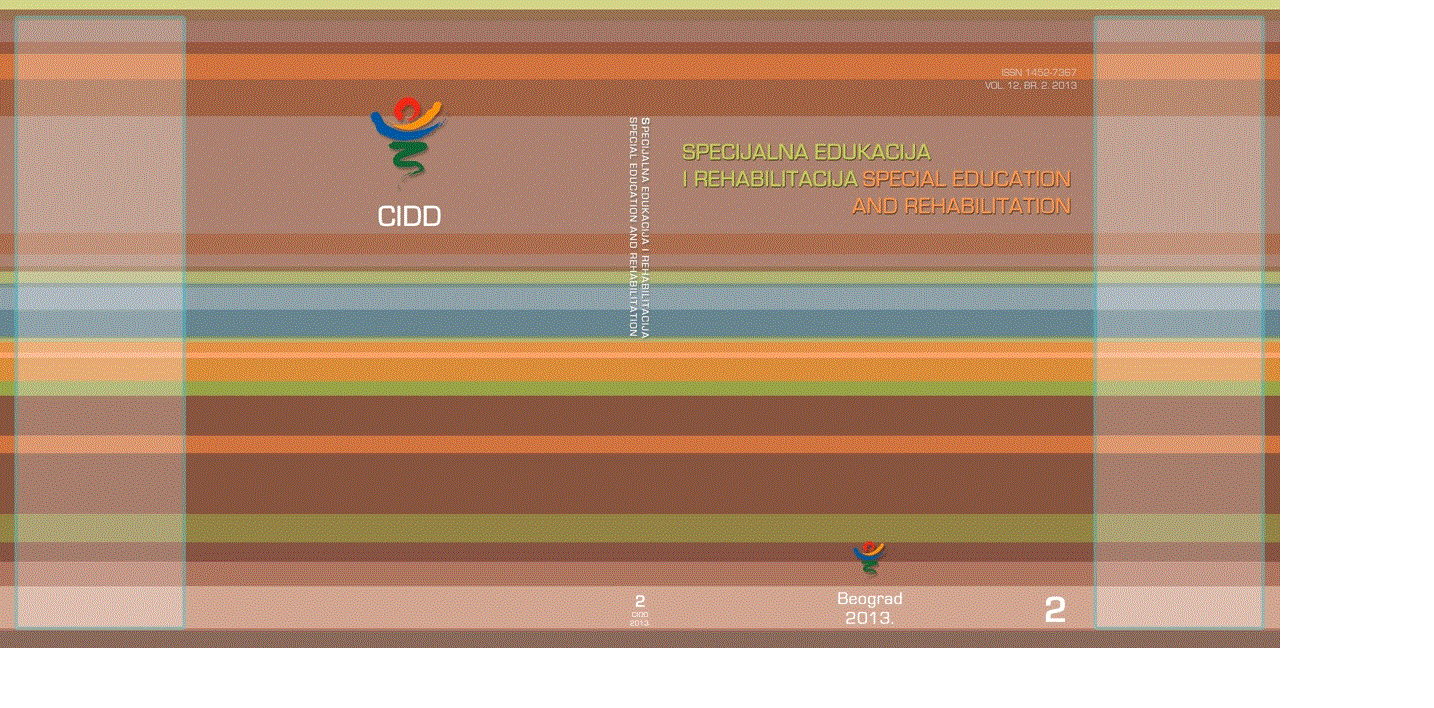PRODUKCIJA NAPOREDNOSLOŽENIH I ZAVISNOSLOŽENIH REČENICA U NARATIVNIM TEKSTOVIMA DECE OD OSAM I DESET GODINA
Sažetak
Cilj rada je da se registruje i ispita upotreba zavisnosloženih i naporednosloženih rečenica u pisanim radovima učenika drugog i četvrtog razreda osnovne škole, odnosno da se ispitaju moguće razlike u sintaksičkoj složenosti na dvama navedenim uzrastima. Teorijsku podlogu za ovo istraživanje predstavljaju radovi u kojima se ispituje produkcija složenijih sintaksičkih konstrukcija, a naročito zavisnosloženih rečenica čija upotreba predstavlja jedno od ključnih obeležja sintaksičkog razvoja u školskom periodu. Uobičajeno se smatra da upotreba jedne ili više zavisnih klauza u okviru komunikativne rečenice implicira viši nivo sintaksičkog razvoja, dok češća upotreba naporednosloženih rečenica upućuje na nedovoljnu sintaksičku zrelost.
Korpus za analizu sastojao se od 44 narativa učenika drugog razreda i 42 narativa učenika četvrtog razreda osnovne škole. Utvrđeno je prisustvo oba tipa složenih rečenica na ispitivanim uzrastima. Naglašenija upotreba zavisnih klauza kod učenika četvrtog razreda upućuje na to da su oni i sintaksički zreliji od učenika drugog razreda kod kojih je češća upotreba klauza u naporednom odnosu.
Ključne reči : sintaksički razvoj, pisano izražavanje, složene sintaksičke konstrukcije, sintaksička zrelost
Reference
Beers, S. F., Nagy, W. E. (2009). Syntactic complexity as a predictor of adolescent writing quality: which measures? Which genre? Reading and writing, 22, 185-200.
Beers, S. F., Nagy, W. E. (2011). Writing development in four genres from grades three to seven:syntactic complexity and genre differentiation. Reading & Writing 24: 183-202.
Berman, R. A. (2004). Between Emergency and Mastery. In:Language Development across Childhood and Adolescence (R. A. Berman, ed.). Philadelphia: John Benjamin’s Publishing Company, 9-35.
Gutierrez-Clellen, V.F., Hofstetter, R. (1994). Syntactic Complexity in Spanish Narratives: a Developmental Study. Journal of Speech and Hearing Research 37,645-654.
Hunt, K. W. (1965). Grammatical structures written at three grade levels. (research report No.3). Champaign, IL: National Council of Teachers of English.
Hunt, K. W. (1970). Syntactic Maturity in Schoolchildren and Adults. Monographs of the Society for Research in Child Development 35 (1),1-67.
Kašić, Z. (2002). Agramatična produkcija i semantička „zbrka“ kod dece ranog školskog uzrasta. Istraživanja u defektologiji, 1. Beograd:Defektološki fakultet, 113-130.
Kašić, Z., Borota, V. (2003). Negramatičnost i agramatizam u aktivnom sintaksičkom razvoju. Srpski jezik, VIII/1-2, 439-455.
Klecan-Aker, J. S., Hedrick, D. L. (1985). A study of syntactic language skills of normal school-age children. Language, Speech, and Hearing Sevices in Schools 16, 187-198.
Kristal, Dejvid (1996). Kembrička enciklopedija jezika. Beograd:Nolit.
Loban, W. (1976). Language development:kindergarten through grade twelve (Research report No.18). Urbana, IL: National Council of Teachers of English.
Morris, N. T., Crump, W.D. (1982). Syntactic and vocabularly development in the written language of learning disabled and non-disabled students at four age levels. Learning Disability Quarterly 5, 163-172.
Moskovljević, J. (1989). Razumevanje i upotreba rečenica kod desetogodišnjaka. Književnost i jezik, 2, 138-144.
Moskovljević, J., Ivanović, M. (2009). „Kvantitativna sintaksička svojstva pisanog jezičkog izraza desetogodišnjaka“. Rad izložen na Sedamnaestom kongresu Saveza slavističkih društava Srbije. Sokobanja, 18. – 20. septembar 2009.
Nippold, M. A. (2004). Research on Later Language Development. In: Language Development across Childhood and Adolesence (R. A. Berman, ed.). Philadelphia: John Benjamin’s Publishing Company, 1-9.
Nippold, M. A.(1998). Later Language Development (The Schoolage and Adolescent Years). Austin, Texas.
Nippold, M.A., Ward-Lonegran, J.M., Fauning, J. L. (2005). Persuasive writing in children, adolescens, and adults:a study of syntactic, semantic, and pragmatic development. Language, Speech, and Hearing Services in Schools 36, 125-138.
O’ Donnell, R., Griffin, W., Norris, R. (1967). Syntax of kindergarten and elementary schoolchildren: a transformational analysis (Research report No. 8). Champaign IL: National Council of Teachers of English.
Radenković, Lj. (1984). Smisaonost teksta kao stepen pismenosti. U: Pitanja elementarne pismenosti (S. Vasić i dr. ur.). Beograd: Institut za eksperimentalnu fonetiku i patologiju govora, 157-161.
Ravid, D. (2004). Derivational morphology revisited. In:Language Development across Childhood and Adolescence (R. A. Berman, ed.). Philadelphia: John Benjamin’s Publishing Company, 53-83.
Scott, Ch. M. (1988). Spoken and written syntax. In: Later language development:Ages nine through nineteen (M. A. Nippold, ed.). Austin,Texas : PRO-ED, 49-95.
Scott, Ch. M. (2004). Syntactic Ability in Children and Adolescents with Language and Learning Disabilities. In:Language Development across Childhood and Adolescence (R. A. Berman, ed.). Philadelphia: John Benjamin’s Publishing Company, 111-135.
Silva, M. L., Sanchez Abchi, V., Borzone, A. (2010). Subordinated Clauses Usage and Assessment of Syntactic Maturity: a Comparison of Oral and Written Retellings in Beginning Writers. Journal of Writing Research 2 (1), 47-64.
Tolchinsky, L. (2004). The Nature and Scope of Later Language Development. In:Language Development across Childhood and Adolescence (R. A. Berman, ed.). Philadelphia: John Benjamin’s Publishing Company, 233-249.

